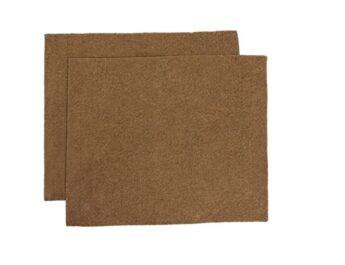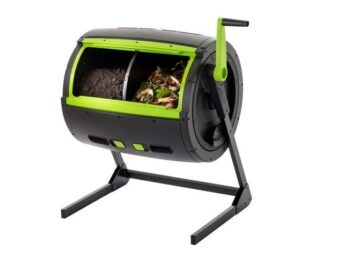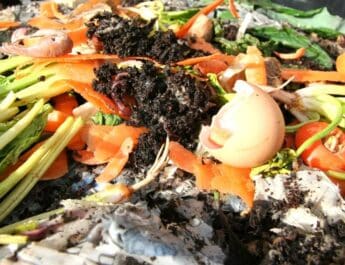Tiger worms; what are they exactly, are they the same as earthworms, and are they good for your compost and your garden? Read on..
Introduction
In your garden, you’ve heard great things about composting worms, but what about Tiger Worms: are they good for the garden?
Many different types of worms can be used in your garden, so it can be hard to know which one is best for you.
Tiger worms are the perfect choice for anyone looking for an easy and convenient way to improve their garden soil.
In this blog post, we’ll explain what tiger worms are and answer some other questions about them.
What Are Tiger Worms?
Tiger worms (scientifically known as Eisenia fetida) are composting worms, also known as brandling worms, red worms, or red wriggler worms.
Typically, tiger worms live in large groups near the surface of the soil and consume organic matter like rotting vegetation, manure, and compost.
They’re reddish-brown and have segmented bodies that give them a striped appearance.
The worms don’t have eyes or ears, but they can detect heat, light, and movement in the soil around them. They don’t even have teeth, so their bodies use digestive enzymes and small pieces of debris to break down and digest food.
A single tiger/red worm can eat food equal to its weight every day. That means a pound of worms can eat a pound of food scraps daily. Tiger/red worms can’t survive in very hot or cold surroundings; they need a moist environment around them.
The ideal temperatures for the worms are 65F to 80F (18C – 27C). A temperature over 90° Fahrenheit (32.2C) will kill them.
Tiger worms can breathe both air and water directly through their skin. Also, they are hermaphroditic, so they don’t need a sexual partner to mate to reproduce. Instead, it takes them about six weeks after birth to reach sexual maturity.

Are Tiger Worms The Same As Earthworms?
No, tiger worms and earthworms are not the same. People often mistakenly believe they’re the same thing but they are not. Even though red wigglers are technically referred to as earthworms, there are significant differences between species.
Difference Between Tiger Worms And Earthworms
● The main difference between these worms is that tiger worms are more miniature than earthworms. Earthworms can grow up to 14 inches in length, while tiger worms only grow to about 2 to 4 inches.
● Tiger worms are reddish-brown, while earthworms can be red, brown, or black.
● Tiger worms eat organic foods or vegetables like rotting vegetation, while earthworms consume tiny microorganisms in the ground like fungus, bacteria, and dead leaves.
● Tiger worms live in large groups and are often found near the soil’s surface, while earthworms live solitary lives and are found more profound in the ground.
● While both species require adequate moisture, tiger/red worms prefer slightly warmer temperatures.
● These worms reproduce more quickly than earthworms. A single tiger or red worm can produce 1,000 young worms in just six months.
“If worms are underfed, they will stop breeding as instinct tells them there are not enough resources to sustain them”
Compostcommunity.com.au
Are Tiger Worms The Same As Red Wigglers?
Yes, tiger worms and red wigglers are the same. As I mentioned earlier, red wigglers are a common name for Eisenia fetida, the scientific name for tiger worms. Eisenia fetida also goes by the common names manure worm, branding worm, redworm, panfish worm, and trout worm.
How Do You Identify A Tiger Worm?
It is hard to tell the difference between a tiger worm and an earthworm at once, significantly when the earthworm is growing. It’s because both look similar.
You can identify a tiger worm (brandling worm) by looking for these characteristics:
● A fully grown tiger or red worm is three to five inches long.
● The body color is reddish-brown.
● It has tiny rings and space strips all over its body. Because of this, they are called tiger worms.
● Lives near the soil surface or compost pile.
● More aggressive compared to earthworms.
● It has a clitellum close to the head, and this part is slightly larger than the body.
These are some essential things that separate tiger worms from earthworms.
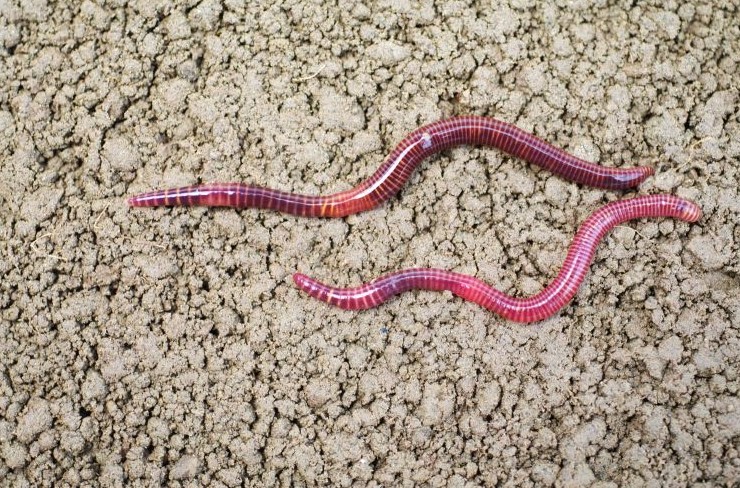
There’s a useful video on YouTube which you can watch here on identifying a red wriggler: https://www.youtube.com/watch?v=Yorcjo3zQJ0
Are Tiger Worms Good For Your Garden?
Yes, tiger worms are excellent for your garden. They help to aerate the soil, which means they help make it easier for water and nutrients to reach plant roots.
These worms also help improve drainage and reduce compaction in the soil. In addition, their castings (waste) are a rich source of plant nutrients and minerals.
Not only that, but tiger worms also help to decompose dead leaves and other organic matter in the garden, which provides food for beneficial microorganisms in the soil.
In short, tiger or red wiggler worms are vital to a healthy garden ecosystem. However, they play a significant role in soil construction and organic waste recycling.
Are Tiger Worms Good For Composting?
Absolutely yes, tiger worms are great for composting. They are the best worms to use in your wormery for worm farming since they eat a lot and help speed up the process.
As I mentioned earlier, these worms have a large capacity for consuming organic matters. For example, a single pound of tiger worms can eat up to a pound of waste food daily. That means they can help you quickly compost your kitchen scraps and other organic matters.
How Many Tiger Worms Do I Need For Composting?
How many tiger worms you need for vermicomposting depends on your worm bin size and how much food waste you have to compost. These compost worms can compost about half their body weight each day, meaning one pound of worms will compost about half a pound of food daily.
According to Mary Appelhof, author of “Worms Eat My Garbage,” worm farmers need two pounds of worms (about 2,000 wigglers) for every pound per day of wasted food. To determine how many worms you need, measure your family’s food waste. For example, if you don’t know how much food waste your household produces, observe it for a week and then divide it by seven.
Some vermiculture experts recommend starting with a smaller number of worms, which is not bad if you’re relatively new to this. But, of course, you’ll have to reduce the leftovers of your food until the population grows.
Remember that worms can double their population every 90 days if you provide them with adequate food and a good home.
“Tiger worms also assist in living more environmentally friendly lifestyles, as they are one of the main worms used in wormeries and found in compost heaps, they allow us to process our kitchen and garden waste breaking it down and eventually creating rich compost for gardens, allotments and window boxes.”
buglife.org.uk
Where Do You Get Tiger Worms?
Usually, you can get tiger or red worms from a bait shop, local nursery, or online. If you want the best quality vermicomposting worms, buy them from a professional breeder.
These worms are delivered in breathable pouches and sent by secure delivery to ensure they arrive healthily. In addition, you can find them in your garden if the conditions are right.
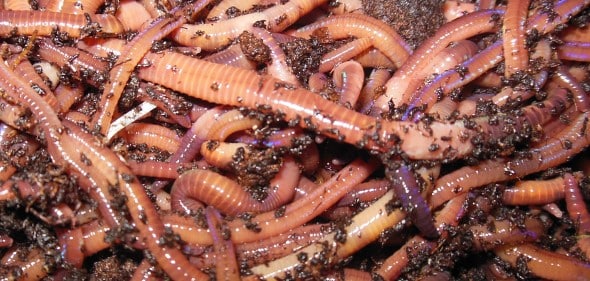
What Do Tiger Worms Eat?
Usually, tiger or manure worms eat waste food and decaying organic matters like leaves, grass, and paper.
Their byproducts, known as worm castings and liquid tea, work well as natural fertilizers for your plants or garden.
These are some foods you should feed your worms:
● Vegetable scraps (like apple cores, peels, carrot tops, etc.)
● Coffee grounds and filters
● Tea bags
● Egg shells (crushed)
● Shredded newspaper and cardboard
● Paper towels and toilet paper rolls
Foods you should avoid to feed the worms:
● Meat and dairy products
● Greasy foods
● Onions and garlic
● Spicy foods
● Bread and pasta
● Oils and liquids such as soup
● Cooked or processed food
● Citrus fruit or acidic foods (though small amounts are acceptable)
How Much Do Tiger Worms Cost?
Tiger worms typically cost between $20 and $30 for a pound. There are approximately 1000 tiger worms in a pound, but the prices may vary depending on location and demand.
Conclusion
I hope this article has helped you better understand Tiger Worms. Tiger worms are suitable for your garden, and worm farmers should use them to produce nutrient-rich compost due to their ability to break down organic waste quickly.
They also help to decompose dead leaves and other organic garden waste, which provides food for beneficial microorganisms in the soil. Just make sure to provide them with plenty of water, food scraps, and moist surroundings; they will provide your garden with many benefits.
If you have any questions about this topic, please don’t hesitate to ask in the comments below. I’ll be happy to help you out.


